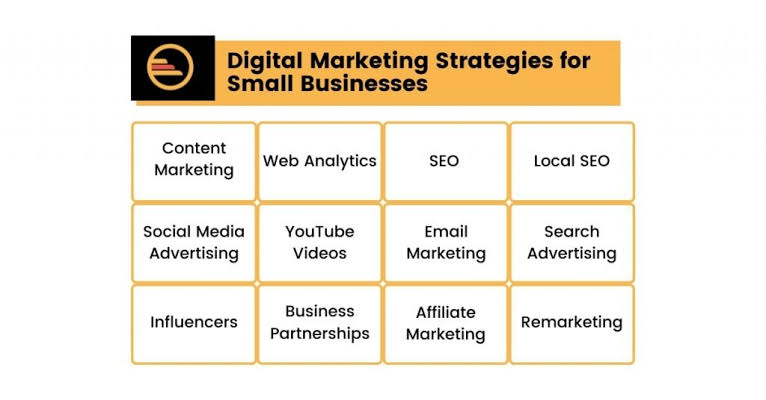Social media is one of the best tools for small businesses looking to grow their brand. It’s cost-effective, easy to use, and allows you to connect directly with your audience. But to make the most of it, you need a solid strategy. Let’s break down the steps to help you create a social media marketing plan that works for your small business.

1. Define Your Goals
Before you dive into social media, take a moment to define your goals. What do you want to achieve? Do you want more website traffic, higher engagement, or better brand awareness? Setting clear, measurable goals will guide your efforts and help you track progress.
For example, if your goal is to increase brand awareness, you’ll focus on creating shareable content that people want to spread. If you’re trying to drive more sales, you might use social media to share promotions or product launches. Understanding your goals helps ensure your social media strategy stays focused and effective.
2. Know Your Audience
To create content that resonates with your audience, you need to know who they are. This involves understanding their needs, interests, and behavior on social media. You don’t need to guess, use your current customer data and insights from social media platforms to learn more about your audience.
Start by analyzing your existing followers. What do they like? Where are they from? What times are they most active? These insights will help you create content that appeals to the right people, at the right time.
3. Choose the Right Platforms
Not all social media platforms are the same. Each one has its strengths and audience. As a small business, it’s essential to choose the platforms that align with your goals and audience. If you’re targeting younger demographics, platforms like Instagram or TikTok may be the best fit. For B2B businesses, LinkedIn could be a more effective platform.
Focus your efforts on 2-3 platforms that best match your audience. Trying to be everywhere at once can lead to burnout and diluted efforts. It’s better to be consistent and effective on a few platforms than spread yourself too thin.
4. Create Engaging Content
Content is the heart of any social media marketing strategy. It’s what attracts your audience and keeps them coming back. To create content that engages, you need to think about what your audience wants to see. Are they looking for entertainment, education, or inspiration?
Try different types of content: images, videos, blog posts, infographics, and more. Don’t be afraid to experiment and see what resonates best with your audience. For example, videos tend to get more engagement on platforms like Facebook and Instagram. You can use an AI video editor to quickly create professional videos with simple text commands. Whether it’s editing a video style, swapping media, or changing scenes, this tool makes video production easier and faster.
Another great tool for creating high-quality content is an AI video generator app. This app lets you generate videos quickly, making it a perfect addition to your social media strategy. By using these tools, you can keep your content fresh and engaging without the hassle of manual editing.
5. Plan Your Posting Schedule
Consistency is key when it comes to social media. Posting regularly helps keep your audience engaged and reminds them of your brand. But posting too often can overwhelm your followers, so it’s important to find a balance.
Use a social media calendar to plan your posts in advance. This helps you stay organized and ensures you’re posting consistently. Most social media platforms provide scheduling tools, so you can set your posts to go live at optimal times when your audience is most active.
6. Engage with Your Audience
Social media is a two-way street. While it’s important to post great content, it’s equally important to engage with your followers. Respond to comments, answer questions, and interact with people who share or mention your posts.
This interaction helps build a loyal community and makes your audience feel valued. Additionally, engagement can boost your visibility on social media, as most platforms prioritize content that gets more interaction.
7. Monitor and Analyze Your Results
Once you start posting, it’s important to track your progress. Social media platforms offer analytics tools that help you see how your posts are performing. Are you reaching your target audience? Which posts are getting the most engagement?
These insights will show you what’s working and what’s not. Use this data to tweak your strategy. If you notice a particular type of post or content format is getting more interaction, focus on that. Similarly, if something isn’t working, don’t be afraid to pivot and try a new approach.
8. Use Paid Advertising (When Necessary)
While organic reach is valuable, sometimes it makes sense to invest in paid advertising to boost your social media presence. Platforms like Facebook, Instagram, and LinkedIn offer highly targeted advertising options. You can tailor ads to specific demographics, interests, and even behaviors.
Start small and test your ads to see what works best. Paid ads can help you reach a wider audience and accelerate your social media growth, especially if you’re launching a new product or service.
9. Collaborate with Influencers
Influencer marketing can be a powerful way to reach new audiences. If you can find influencers whose followers match your target audience, collaborating with them can help you gain credibility and exposure.
Start by working with micro-influencers, who often have smaller, more engaged audiences. These influencers are more affordable and can deliver a better return on investment. You don’t need big-name influencers to make an impact—sometimes smaller collaborations yield better results.
10. Stay Flexible and Adapt
The world of social media is always changing. New platforms emerge, trends evolve, and algorithms shift. Stay flexible in your approach, and be ready to adapt when needed.
Keep an eye on new tools, strategies, and trends that could help improve your social media strategy. If something isn’t working, don’t be afraid to change course. An adaptable mindset will help you stay ahead of the competition.
Conclusion
Creating a social media marketing strategy for a small business is all about setting clear goals, understanding your audience, and being consistent with your efforts. By choosing the right platforms, creating engaging content, and leveraging tools like the AI video editor and AI video generator app, you can save time and produce high-quality content that resonates with your followers. Don’t forget to monitor your results, engage with your audience, and stay flexible as you grow. With the right approach, your small business can thrive on social media and build a strong, loyal customer base.
